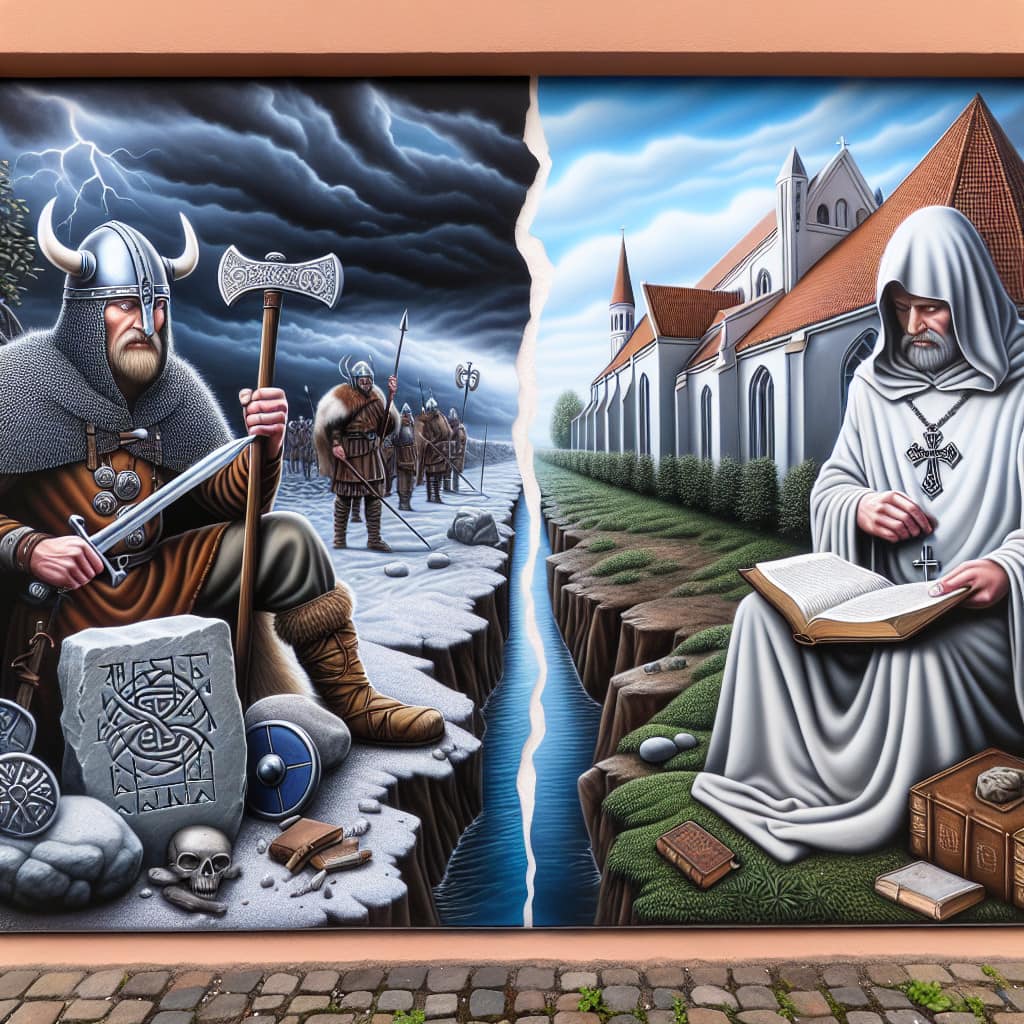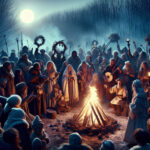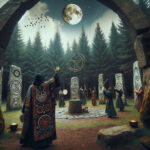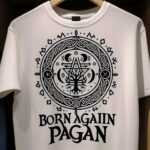The Viking Age was a time of great change and progress for the people of the Norse lands. During this time, the Viking people experienced a shift in their religious beliefs, transitioning from paganism to Christianity. This article looks at the differences between these two religious systems, exploring the different traditions, beliefs, and practices associated with each. We will look at how the Viking people adapted to their new faith and how it impacted their culture and society. In addition, we will examine the impact Christianity had on the Viking people and their social and political structures. Finally, we will discuss how the duality of these two beliefs has left its mark on modern Scandinavian culture.

The Vikings were a seafaring culture that inhabited Scandinavia and parts of the British Isles in the 8th to 11th centuries. They were renowned for their skill in sailing, warfare, and commerce. Yet, this seafaring culture was also divided between two distinct belief systems: paganism and Christianity. This article will compare and contrast the two belief systems and their impact on Viking society.
Paganism
Paganism was the predominant religion of the Viking Age. It was a polytheistic religion that venerated a pantheon of gods and goddesses, each of whom had their own distinct characteristics and attributes. The Vikings believed that the gods and goddesses could influence their daily lives, and they sought to appease them through acts of veneration and sacrifice.
The most important gods in the Viking pantheon were Odin, Thor, and Freya. Odin was the chief god of the pantheon, and he was associated with wisdom, war, and magic. Thor was the god of thunder and strength, and Freya was the goddess of love, beauty, and fertility.
The Vikings believed that the gods and goddesses could be invoked through prayer and sacrifice, and that they could intervene in human affairs. They practiced a variety of rituals and ceremonies designed to honor the gods and goddesses and to propitiate their favor. They also believed that the gods and goddesses could be appeased with offerings of food and drink.
Christianity
Christianity was the other major religion of the Viking Age. It was a monotheistic religion that venerated one God and proclaimed the divinity of Jesus Christ. The Vikings were initially exposed to Christianity through contact with Christians in the British Isles, where they interacted with both Catholic and Anglican communities.
The Vikings were initially hesitant to convert to Christianity, as they feared that it would compromise their own pagan beliefs and practices. However, as contact with Christian communities increased, many Vikings began to convert to Christianity. Those who chose to convert were baptized and were often given new Christian names.
The conversion of the Vikings to Christianity had a significant impact on their culture and beliefs. Christian beliefs and values began to supplant pagan beliefs and practices, and Christian customs, such as marriage and burial, began to replace traditional Viking customs. Christianity also had a profound effect on art and literature; the Vikings began to produce works of art and literature that were influenced by Christian themes and motifs.
Comparison
The two belief systems had both similarities and differences. Both belief systems were polytheistic, and both venerated gods and goddesses who were believed to have influence over human affairs. However, while paganism was a polytheistic religion that venerated many gods and goddesses, Christianity was a monotheistic religion that venerated only one God.
In terms of their impact on Viking society, both belief systems had a significant impact. Paganism was the predominant religion of the Viking Age, and it shaped Viking culture, beliefs, and customs. Christianity, on the other hand, had a more profound effect on Viking society; it supplanted traditional pagan beliefs and practices, and it changed the way the Vikings viewed art and literature.
Conclusion
The Vikings were a seafaring culture that was divided between two distinct belief systems: paganism and Christianity. Paganism was the predominant religion of the Viking Age, and it shaped Viking culture, beliefs, and customs. Christianity, on the other hand, had a more profound effect on Viking society; it supplanted traditional pagan beliefs and practices, and it changed the way the Vikings viewed art and literature. Ultimately, both belief systems had a significant impact on Viking society and culture.
The Vikings were a complex people, and their religious beliefs were just as complex. The Vikings were not just pagans or just Christians, but a mix of both. They adapted their beliefs to fit their changing world and their own personal needs. It is clear that the Vikings were open to both pagan and Christian beliefs, and that these beliefs often coexisted peacefully. Ultimately, the Vikings’ religious beliefs were a reflection of their own cultural and personal values, and it is this complexity that makes them so fascinating to study. The Vikings’ willingness to explore and combine different religious beliefs demonstrates their ability to adapt to their changing world and to create a unique religious identity.





